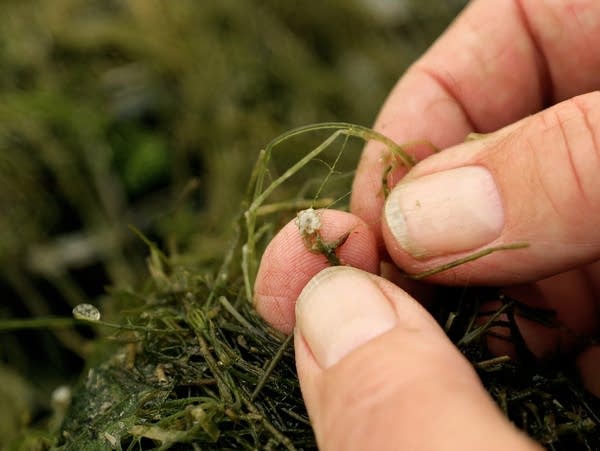Aquatic invader starry stonewort discovered in Whitefish Chain of Lakes

Go Deeper.
Create an account or log in to save stories.
Like this?
Thanks for liking this story! We have added it to a list of your favorite stories.
The Minnesota Department of Natural Resources has confirmed starry stonewort, an invasive species, in the popular Whitefish Chain of Lakes north of Brainerd.
The DNR says starry stonewort was found in Rush Lake, near the city of Crosslake in Crow Wing County. It’s the first time the invasive algae has been confirmed in the Whitefish chain.
A contractor hired by the Whitefish Area Property Owners Association (WAPOA) to conduct plant surveys discovered it on Sept. 4 near a public access on a channel between Rush and Whitefish lakes.
Starry stonewort can choke out native plants. It forms dense mats of vegetation that can make it difficult to boat or swim.
Turn Up Your Support
MPR News helps you turn down the noise and build shared understanding. Turn up your support for this public resource and keep trusted journalism accessible to all.
The DNR is conducting follow-up surveys to determine how widely the invasive algae is distributed in Rush Lake, and whether it’s spread to other lakes in the chain.
Starry stonewort was first discovered in Minnesota in 2015 in Lake Koronis near Paynesville. It’s now been confirmed in 31 water bodies in the state.

It can resemble native plants, but it’s usually identified by its star-shaped white bulbils visible in late summer.
Lake residents have been bracing for the possibility of starry stonewort invading the Whitefish chain, especially with findings in nearby Leech and Winnibigoshish lakes.
A group of WAPOA members took a field trip last month to Lake Koronis to learn from that lake’s experience.
“It is not a pretty picture,” WAPOA president Tony Coffey wrote in an email to members. “There are substantial ongoing costs and the inability to eradicate, only mitigate.”
Coffey wrote that there’s no good place to find starry stonewort, but the Rush Lake channel location is particularly bad due to the amount of boat traffic and the high water flow, which increases the likelihood that downstream waters will be affected.
The DNR says starry stonewort is most likely spread by fragments of algae clinging to boats, trailers, personal watercraft, boat lifts or other water equipment.
Minnesota law requires people to clean boats, trailers and equipment, drain all water and leave drain plugs out while transporting a boat, and disposing of unwanted bait in the trash. Docks, boat lifts and rafts must be left out to dry for 21 days before moving them to another lake or river.


